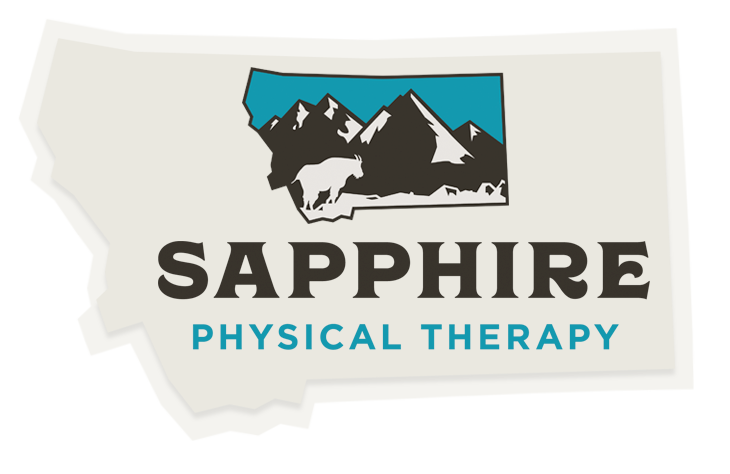Snowboarding Prehab
Every season in Montana has its outdoor recreation to look forward to and for me and many others, winter means snowboarding. When I first learned to snowboard as an adult, I spent the weekend catching edges and came to work with such a sore neck; I could barely lift my head off the plinth to demonstrate exercises. Snowboarding can be a violent sport with a steep learning curve, but once an athlete gets the hang of it, it is an awesome way to move our bodies and enjoy time with friends in the beautiful Montana winters.
Movement Analysis
Snowboarding requires considerable lower body and trunk strength, dynamic balance, and impact tolerance. An athlete needs to be able to constantly shift between their heel and toe edges, rotate through their trunk and legs, and flex and extend their hips, knees, and ankles. These movements put our body through significant forces, especially when absorbing landings, navigating tough terrain, and occasionally (or for newer athletes, constantly) falling.
Injury Epidemiology
Beginners are far more likely to get hurt overall and do so most often when falling. More experienced athletes are less likely to get injured, but experience more serious injuries from difficult maneuvers at high velocities and impacts such as jumps and tricks (1, 2). Stenroos et al tracked injuries at a Northern Finland resort over six years and found that ~70% of injuries occurred from a fall, 24% from losing control on a jump, and 6% from collisions between people and immovable objects. ~59% of injuries occurred to the upper extremity, 17% to the lower, 12% to the head, and 9% to the back (3). The most common injury? Wrist fractures (2, 3). One Vermont base-lodge clinic tracked injuries at their ski resort for over 18 seasons and found that snowboarders were more likely to injure their wrist, shoulder, and ankles, while skiers experienced less injuries overall, but were far more likely to impact their lower extremities and knee ligaments in particular (4).
Equipment
Before discussing physical preparation, make sure that you are well versed in signage and safety on the mountain, your bindings are appropriately tightened, and you have goggles with optimal visibility.
Head injury rates are similar between skiers and snowboarders (2) and Hume et al found that non-helmet users are 2.3 more likely to die from a head injury (1). The impacts from snow sports and risk of head injury make helmets a non-negotiable piece of gear on the mountain. Wearing one reduces your risk of head injuries by 35-60% (5, 6). Wrist guards can similarly help to reduce risk of wrist injury by up to 50-85% (7, 8).
Prehab
Beginners are more likely to fall on the mountain, but they also have increased injury risk due to having less sport-specific strength, coordination, and skill (1). Experienced boarders can benefit from a good routine leading into the season too.
When putting together a “prehab” routine for snowboarding, we want to strengthen areas prone to injury and improve our impact tolerance and dynamic stability. Demonstrations of some of these exercises can be found at the end.
Plyometrics: Broad jumps and box jumps. These bilateral take offs/landings help to develop power and improve our stability during landings.
General Lower Body Strength: Back squats, Romanian deadlifts, and calf raises to help strengthen our hips, knees, and ankles to prepare for high forces while boarding.
Chops: Core strengthening that emphasizes trunk rotation to help us with stability and carving.
Plyometric push-ups: Dynamic stability of our upper extremities should we have a hard landing or quickly push off the ground to keep our balance and stay upright.
Unilateral Farmer Carries: Another core exercise that provides the additional benefit of strengthening our wrists to prevent sprains.
Unshod Y-Balance: Without shoes, we can strengthen our intrinsic foot musculature but this activity also improves the dynamic balance of our lower extremities.
While there is no way to completely eliminate the risk of injuries, we can reduce that risk by addressing contributing factors. Make sure to prepare both your gear and body for the fun ahead. Have a fun winter Missoulians!
(Chops: stand shoulder width apart, then rotate across and down)
(Plyometric push-up: catch and lower down slowly like a push up, then explode off of the box, pushing hard and fast, repeat)
(Unilateral Farmer Carry: hold a heavy weight off to one side and walk for a specific distance or time, trying to resist the weight and keep your trunk upright)
(Y-Balance: balance on one leg while you reach towards each direction and return to center after each reach.)
Written by Benjamin Blakely PT, DPT, CSCS
References:
Hume PA, Lorimer AV, Griffiths PC, Carlson I, Lamont M. Recreational Snow-Sports Injury Risk Factors and Countermeasures: A Meta-Analysis Review and Haddon Matrix Evaluation. Sports Med. 2015;45(8):1175-1190. doi:10.1007/s40279-015-0334-7
Wijdicks CA, Rosenbach BS, Flanagan TR, et al. Injuries in elite and recreational snowboarders. Br J Sports Med. 2014;48(1):11-17. doi:10.1136/bjsports-2013-093019
Stenroos A, Handolin L. Incidence of Recreational Alpine Skiing and Snowboarding Injuries: six years experience in the largest ski resort in Finland. Scandinavian Journal of Surgery. 2015;104(2):127-131. doi:10.1177/1457496914532249
Kim S, Endres NK, Johnson RJ, Ettlinger CF, Shealy JE. Snowboarding injuries: trends over time and comparisons with alpine skiing injuries. Am J Sports Med. 2012;40(4):770-776. doi:10.1177/0363546511433279
Cusimano MD, Kwok J. The effectiveness of helmet wear in skiers and snowboarders: a systematic review. Br J Sports Med. 2010;44(11):781-786. doi:10.1136/bjsm.2009.070573
Russell K, Christie J, Hagel BE. The effect of helmets on the risk of head and neck injuries among skiers and snowboarders: a meta-analysis. CMAJ. 2010;182(4):333-340. doi:10.1503/cmaj.091080
Hagel B, Pless IB, Goulet C. The effect of wrist guard use on upper-extremity injuries in snowboarders. Am J Epidemiol. 2005;162(2):149-156. doi:10.1093/aje/kwi181
Slaney GM, Weinstein P. Community-driven intervention to reduce injury rates in school-age snowboarders. Aust J Rural Health. 2009;17(4):218-219. doi:10.1111/j.1440-1584.2009.01075.x










